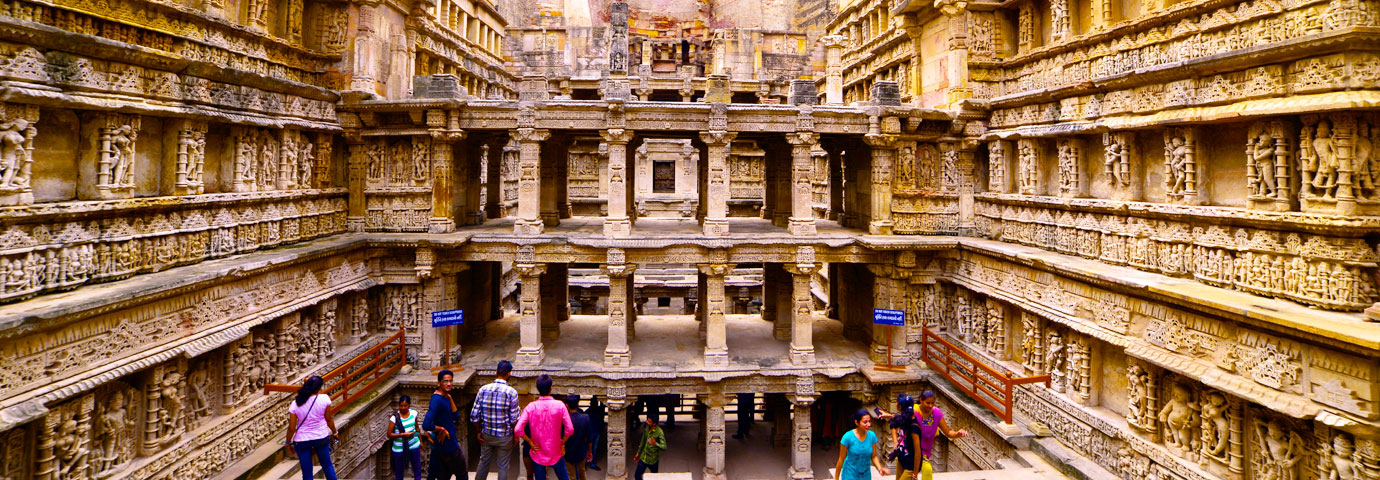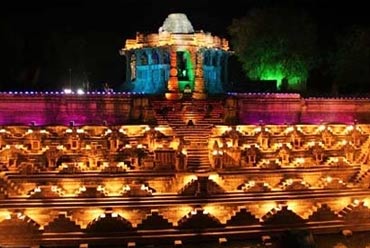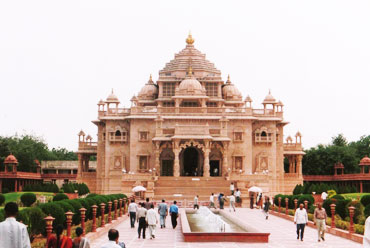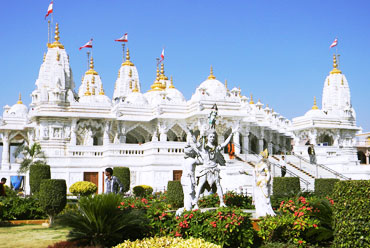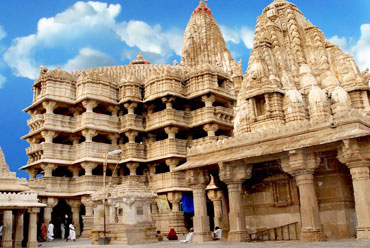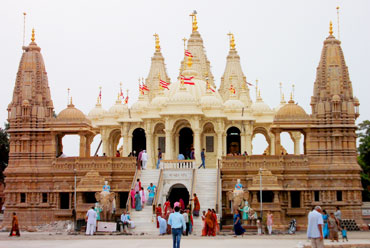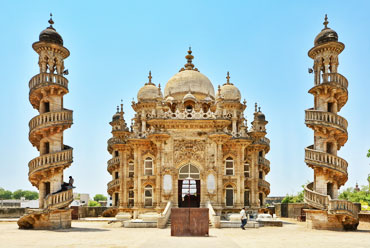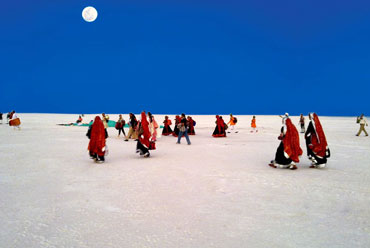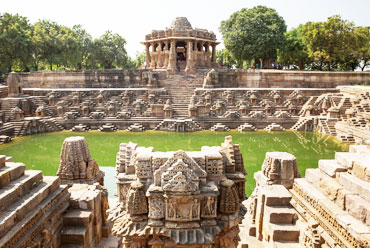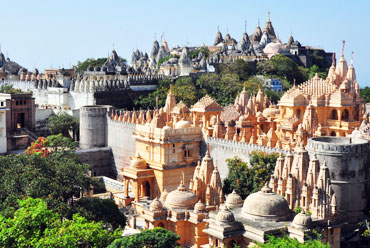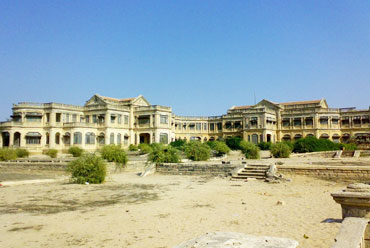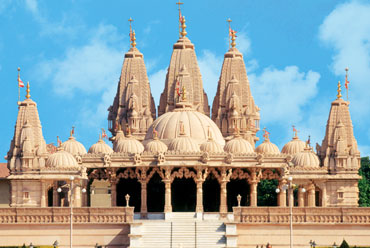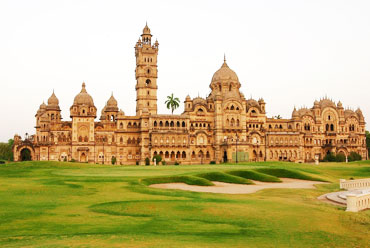Patan, the former capital of Gujarat, is a place famous for Patola sarees, one of the finest hand-made textiles in the world. One can see this exquisite fabric being woven here.
The Patan Patola is one of the finest hand-woven textiles produced the world over. It combines the art of tying and dyeing of the warp and weft threads and their weaving together, when each warp thread is carefully placed against the corresponding colors of the weft. Also known as the double Ikat, it is woven only in Bali, Indonesia besides Patan.
In an area called Sadvi Wada, one can watch the complex weaving of silk Patola saris, which are now made by just one family. Each sari takes from four to six months to produce, and is sold for up to Rs. 70, 000 (more than US$ 2,000). Silk threads are dyed in a set pattern before being woven on a complex loom and utmost care is taken to ensure completely even tension throughout the fabric.
Patan produces very intricate patterns worked with precision and clarity with the characteristic geometric delineation of the design, while maintaining the soft hazy outlines, a natural effect of the technique.
Location
Patan is situated around 130 km from Ahmedabad in the Indian state of Gujarat. The city extends from the latitude 23°52' in the north to longitude 72°1' in the east. The place is well connected by roads and rail to the other cities in the region.
History
The historic town of Patan, founded in AD 796, is situated on the banks of the river Saraswati, about 51 km from Mahesena and 130 km from Ahmedabad. Originally known as Anhil-Vad-Pattan, the town flourished during the Solanki dynasty in 8th-11th century and has some interesting monuments. The city was the capital of the formidable Solankis, but lost all its charm when Mahmud of Ghazni attacked it in AD 1024. Ravaged by time and plundered for religion and riches, very little of the city's earlier glory remains now. Today, Patan is celebrated the world over for its exquisite Patola silk sarees.

